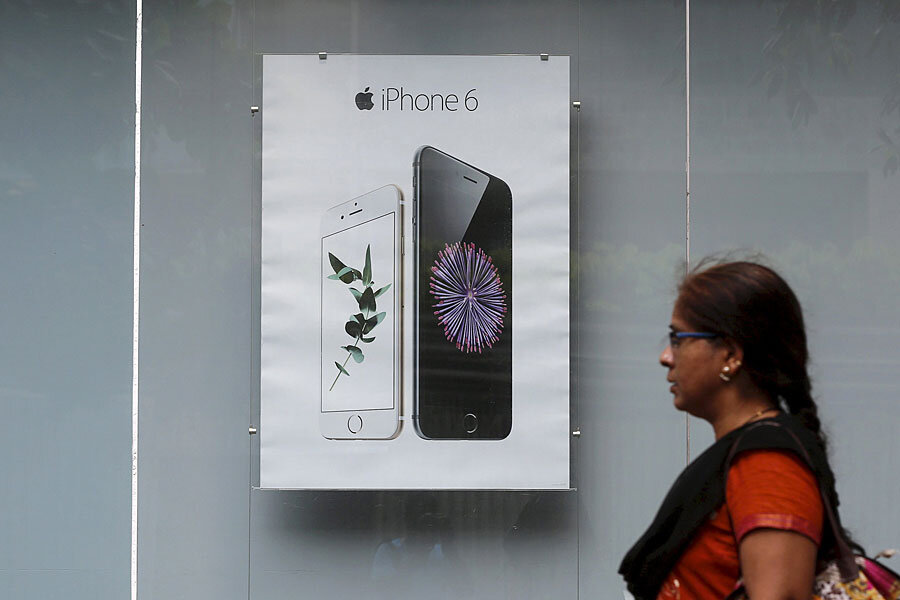As iPhone sales slow, what's in the future for Apple?
Loading...
Apple announced its best quarter yet on Tuesday, but will the company be forced to strategize as iPhone sales flatline?
The company announced $18.4 billion in profit, and $74.8 million in iPhone sales for Apple’s first quarter of fiscal year 2016, which ended on December 26.
“Our team delivered Apple’s biggest quarter ever, thanks to the world’s most innovative products and all-time record sales of iPhone, Apple Watch and Apple TV,” said Apple CEO Tim Cook in a press release.
Apple CFO Luca Maestri also touted Apple’s successes last quarter, despite what he termed, “a very difficult macroeconomic environment.”
In spite of company enthusiasm about Apple’s overall success at the end of last year, many of Apple’s biggest revenue spinners, such as the iPhone, experienced slow growing or even declining sales. That bodes ill for the company’s 2016 second quarter growth.
Mr. Cook himself predicted that next quarter would see Apple’s first decline in revenue since 2003, although he was careful to specify that the dip would likely be slight.
Factors that impact Apple’s bottom line include currency exchange rate shifts and softening in big iPhone markets such as China, Russia, Japan, and Canada.
Sales in China, one of Apple’s biggest markets, actually rose 14 percent last quarter, though revenue growth for the region has remained largely the same, prompting Apple to look for other areas of expansion for their products.
Apple is still confident in its investment in the Chinese market, but in order to counter slow market growth overseas as well as at home, the company is expanding into new markets.
“While iPhones are reaching the end of their market share in the United States, Europe, or China, they are just at the beginning of the growth phase in countries like India, Indonesia, and other emerging markets,” Anshel Gupta, a research director at market research firm Gartner, told Fortune.
In many ways, the outlook is promising. iPhone sales in India grew 76 percent over the last year, with 800,000 phones sold in the fourth quarter alone.
Earlier this month, Apple filed a proposal to build brick and mortar stores in India for the first time. Recent changes in India’s foreign direct investment policy mean that India is more open than ever to Apple’s strategists.
Currently, however, the tech giant holds less than 2 percent of the smartphone market in the world's largest democracy.
Although other smartphone manufacturers such as Samsung and Micromax currently hold a far greater share of India’s smartphone market, Apple is optimistic about its future in the country. Unlike the American market, the Indian market is not already saturated with Apple products.
Cook further justified Apple “increasingly putting more energy into the country,” as India’s young population enters the workforce in droves, generating disposable income that may be spent on status symbol consumer items such as the iPhone. Apple sales in the country are expected to rise 17 percent by next year.
Despite Cook’s optimism, critics of Apple’s expansion into the Indian market cite a smaller middle class and a more frugal culture that could hamper smartphone sales.
Jackdaw Research analyst Jan Dawson told the International Business Times, "In China, there is a big conspicuous consumption aspect to the culture where the people want to have the expensive stuff and show it off. In India, that exists in some segments but there is more of a frugality mentality so people want to be seen to have made a smart purchase rather than an expensive purchase."
Indeed, one of the biggest challenges Apple may face in its expansion into the Indian market is its pricing. According to Reuters, approximately 70 percent of smartphone sales in India are made for less than $150. Apple’s newest models cost far more.
Still, Indian consumers want iPhones. Apple is exploring ways to make that happen.







